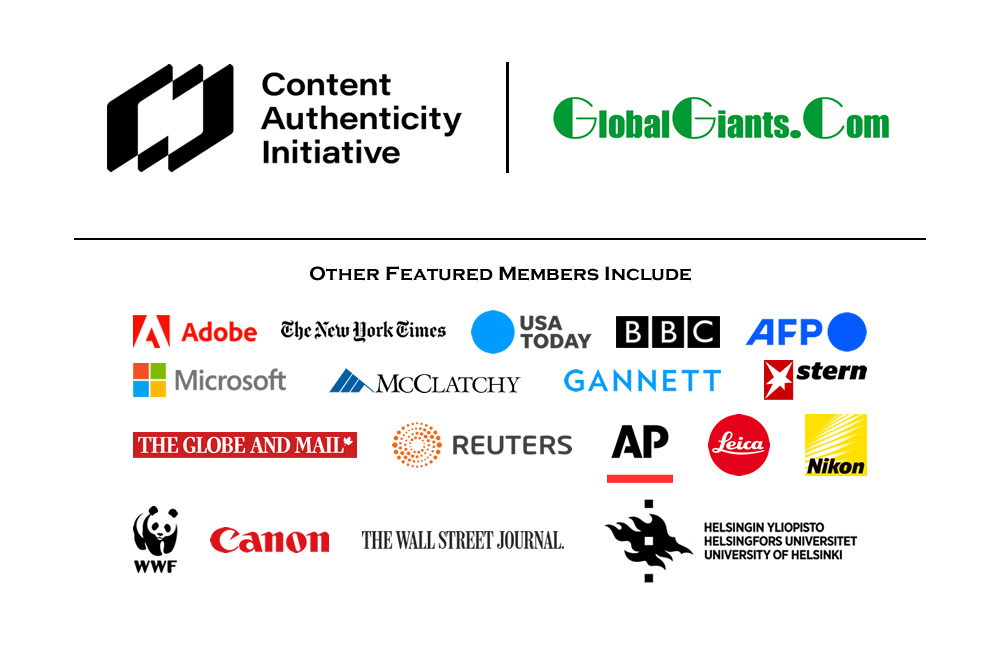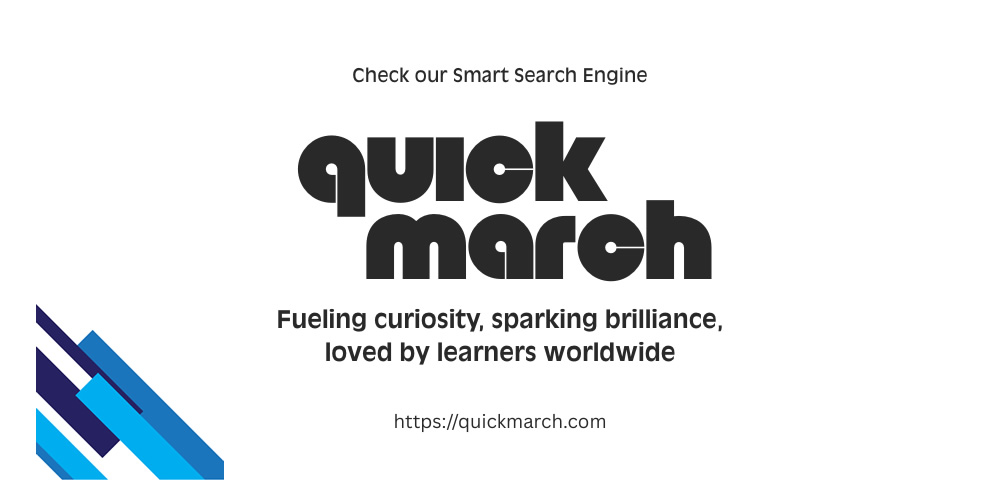« Mastercard Names World Chess Champion Magnus Carlsen Global Brand Ambassador | Main | QS Graduate Employability Rankings 2022 — The World's Best Universities for Graduate Employment »
September 22, 2021
Wall Street Journal/Times Higher Education U.S. College Rankings 2022


Photo: The University of Chicago Campus. Image Credit: Corey Seeman.
London/New York, September 22, 2021 — The Wall Street Journal/Times Higher Education U.S. College Ranking uses 15 performance indicators. It strives to answer the questions that matter most to students and their families. For example, how likely am I to graduate, pay off my loans, and get a good job? Does the college have plenty of resources to teach me properly? Would I be engaged and stretched in the classroom and get good access to my teachers? Is there a diverse campus community?
The 2022 ranking includes almost 800 colleges/universities.
Harvard University tops the table for the fifth year in a row. At the same time, Stanford University climbs two places to second, and the Massachusetts Institute of Technology and Yale University drop one place to third and fourth, respectively.
Johns Hopkins University is the only newcomer in the top 10, ranking at the joint ninth place (up from 11th), while Emory University is the only newcomer in the top 20.
The University of Michigan-Ann Arbor is the top public university for the second year in a row.
One new institution joins the table this year: the United States Military Academy, which ranks 47th.
• The student-focused WSJ/THE College Rankings differ considerably from the THE World University Rankings, which emphasize research excellence on a global scale.
All ranked institutions have an overall score and four pillar scores. However, for each pillar, only institutions ranked in the top 400 overall, or the top 400 in that pillar, have a publicly visible score.
The ranking adopts a balanced scorecard approach, with 15 individual performance indicators combined to create an overall score that reflects the broad strength of the institution.
Data comes from various sources: the U.S. government (Integrated Postsecondary Education Data System - IPEDS), the College Scorecard, the Bureau of Economic Analysis (BEA), the THE US Student Survey, the THE Academic Survey, and the Elsevier bibliometric dataset.
• WSJ/THE Ranking Methodology
The overall methodology explores four key areas:
• Resources (30%)
Does the college have the capacity to deliver teaching effectively? The Resources area represents 30 percent of the overall ranking. Within this, WSJ/THE look at:
- Finance per student (11%)
- Faculty per student (11%)
- Research papers per faculty (8%)
• Engagement (20%)
Does the college effectively engage with its students? Most of the data in this area come from the THE US Student Survey. The Engagement area represents 20 percent of the overall ranking. Within this, WSJ/THE look at:
- Student engagement (7%)
- Student recommendation (6%)
- Interaction with teachers and students (4%)
- Number of accredited programs (3%)
• Outcomes (40%)
Does the college generate reasonable and appropriate outputs? Does it add value to the students who attend? The Outcomes area represents 40 percent of the overall ranking.
Within this, WSJ/THE looks at:
- Graduation rate (11%)
- Value added to graduate salary (12%)
- Debt after graduation (7%)
- Academic reputation (10%)
• Environment (10%)
Is the college providing a good learning environment for all students? Does it make efforts to attract a diverse student body and faculty? The Environment area represents 10 percent of the overall ranking. Within this WSJ/THE looks at:
- The proportion of international students (2%)
- Student diversity (3%)
- Student inclusion (2%)
- Staff diversity (3%)
• Wall Street Journal/Times Higher Education U.S. College Rankings 2022
• TOP 100
- 1 Harvard University Massachusetts
- 2 Stanford University California
- 3 Massachusetts Institute of Technology Massachusetts
- 4 Yale University Connecticut
- 5 Duke University North Carolina
- 6 Brown University Rhode Island
- 7 California Institute of Technology California
- 8 Princeton University New Jersey
- =9 Johns Hopkins University Maryland
- =9 Northwestern University Illinois
- 11 Cornell University New York
- 12 University of Pennsylvania Pennsylvania
- 13 Dartmouth College New Hampshire
- 14 The University of Chicago Illinois
- 15 Vanderbilt University Tennessee
- 16 Columbia University New York
- 17 Washington University in St Louis Missouri
- 18 Rice University Texas
- 19 University of Southern California California
- 20 Emory University Georgia
- 21 Carnegie Mellon University Pennsylvania
- 22 Amherst College Massachusetts
- 23 Williams College Massachusetts
- 24 University of Michigan-Ann Arbor Michigan
- 25 Pomona College California
- 26 New York University New York
- 27 University of California, Los Angeles California
- 28 University of Notre Dame Indiana
- 29 Swarthmore College Pennsylvania
- 30 Tufts University Massachusetts
- 31 Wellesley College Massachusetts
- 32 Georgetown University District of Columbia
- 33 The University of North Carolina at Chapel Hill North Carolina
- 34 Claremont McKenna College California
- 35 Carleton College Minnesota
- =36 University of California, Berkeley California
- =36 Haverford College Pennsylvania
- 38 Bowdoin College Maine
- 39 Smith College Massachusetts
- =40 University of California, Davis California
- =40 Middlebury College Vermont
- 42 Boston University Massachusetts
- =43 University of California, San Diego California
- =43 Wesleyan University Connecticut
- =45 University of Illinois at Urbana-Champaign Illinois
- =45 University of Washington-Seattle Washington
- 47 United States Military Academy New York
- 48 Purdue University West Lafayette Indiana
- 49 University of Miami Florida
- 50 Barnard College New York
- 51 Case Western Reserve University Ohio
- =52 Colgate University New York
- =52 University of Rochester New York
- 54 University of Florida Florida
- =55 Mount Holyoke College Massachusetts
- =55 University of Virginia (Main campus) Virginia
- 57 Boston College Massachusetts
- =58 Hamilton College New York
- =58 University of Wisconsin-Madison Wisconsin
- 60 University of Texas at Austin Texas
- =61 Lehigh University Pennsylvania
- =61 Wake Forest University North Carolina
- 63 University of Richmond Virginia
- 64 Bates College Maine
- 65 Vassar College New York
- 66 Davidson College North Carolina
- 67 Scripps College California
- 68 Bryn Mawr College Pennsylvania
- =69 Georgia Institute of Technology Georgia
- =69 Grinnell College Iowa
- 71 Tulane University Louisiana
- 72 George Washington University District of Columbia
- 73 Washington and Lee University Virginia
- 74 Santa Clara University California
- 75 United States Naval Academy Maryland
- 76 University of California, Santa Barbara California
- 77 Lafayette College Pennsylvania
- 78 William & Mary Virginia
- 79 Texas A&M University-College Station Texas
- 80 University of Maryland, College Park Maryland
- =81 Bucknell University Pennsylvania
- =81 Michigan State University Michigan
- 83 University of Pittsburgh-Pittsburgh campus Pennsylvania
- 84 Franklin & Marshall College Pennsylvania
- 85 University of Minnesota Twin Cities Minnesota
- 86 Northeastern University Massachusetts
- 87 University of California, Irvine California
- 88 Pitzer College California
- 89 Macalester College Minnesota
- 90 Loyola Marymount University California
- 91 University of Illinois at Chicago Illinois
- 92 Reed College Oregon
- 93 Kenyon College Ohio
- 94 Southern Methodist University Texas
- 95 Occidental College California
- 96 University of the Pacific California
- 97 Indiana University Bloomington Indiana
- 98 Whitman College Washington
- =99 Dickinson College Pennsylvania
- =99 Ohio State University (Main Campus) Ohio
• 101-200
- 101 Rensselaer Polytechnic Institute New York
- 102 Skidmore College New York
- 103 University of Connecticut Connecticut
- =104 Trinity College Connecticut
- =104 Virginia Polytechnic Institute and State University Virginia
- 106 Trinity University Texas
- 107 Illinois Institute of Technology Illinois
- 108 Rhodes College Tennessee
- =109 Connecticut College Connecticut
- =109 Howard University District of Columbia
- 111 Brandeis University Massachusetts
- 112 Oberlin College Ohio
- 113 Saint Louis University Missouri
- 114 Denison University Ohio
- =115 Colorado College Colorado
- =115 Drexel University Pennsylvania
- =117 College of the Holy Cross Massachusetts
- =117 North Carolina State University North Carolina
- =117 Syracuse University New York
- 120 DePauw University Indiana
- 121 Worcester Polytechnic Institute Massachusetts
- =122 Gettysburg College Pennsylvania
- =122 Seattle University Washington
- 124 University at Buffalo New York
- 125 Stony Brook University New York
- =126 Babson College Massachusetts
- =126 Spelman College Georgia
- =128 University of Denver Colorado
- =128 Simmons University Massachusetts
- =128 Villanova University Pennsylvania
- 131 University of Arizona Arizona
- 132 Bentley University Massachusetts
- 133 University of Utah Utah
- 134 Union College New York
- 135 Rhode Island School of Design Rhode Island
- =136 Drake University Iowa
- =136 Rutgers University-New Brunswick New Jersey
- =138 American University District of Columbia
- =138 Brigham Young University-Provo Utah
- =138 Yeshiva University New York
- =141 University of Massachusetts Amherst Massachusetts
- =141 Penn State (Main campus) Pennsylvania
- =143 Creighton University Nebraska
- =143 Elon University North Carolina
- =143 University of Georgia Georgia
- =143 Thomas Jefferson University Pennsylvania
- 147 Willamette University Oregon
- 148 Berea College Kentucky
- 149 Furman University South Carolina
- =150 St Olaf College Minnesota
- =150 The College of Wooster Ohio
- =152 University of Delaware Delaware
- =152 University of San Diego California
- =154 The Catholic University of America District of Columbia
- =154 Rochester Institute of Technology New York
- =154 University of San Francisco California
- =154 Texas Christian University Texas
- =158 Chapman University California
- =158 Virginia Military Institute Virginia
- =160 Hobart and William Smith Colleges New York
- =160 Linfield College - McMinnville campus Oregon
- =160 Wheaton College (Massachusetts) Massachusetts
- 163 SUNY Binghamton University New York
- =164 Allegheny College Pennsylvania
- =164 Marquette University Wisconsin
- =166 Muhlenberg College Pennsylvania
- =166 Temple University Pennsylvania
- 168 Lawrence University Wisconsin
- 169 University of Iowa Iowa
- 170 Baylor University Texas
- 171 Fordham University New York
- 172 Kalamazoo College Michigan
- =173 Florida State University Florida
- =173 Wheaton College (Illinois) Illinois
- =175 Pepperdine University California
- =175 Ursinus College Pennsylvania
- =177 Loyola University Chicago Illinois
- =177 New Jersey Institute of Technology New Jersey
- =179 George Mason University Virginia
- =179 The University of Tulsa Oklahoma
- 181 Stevens Institute of Technology New Jersey
- =182 Clemson University South Carolina
- =182 University of Colorado Boulder Colorado
- =184 University of California, Riverside California
- =184 Colorado School of Mines Colorado
- =184 Samford University Alabama
- 187 University of Portland Oregon
- 188 SUNY University at Albany New York
- 189 California Polytechnic State University, San Luis Obispo California
- =190 Fairfield University Connecticut
- =190 Sewanee-The University of the South Tennessee
- =192 Beloit College Wisconsin
- =192 Gonzaga University Washington
- =192 Lake Forest College Illinois
- =192 Missouri University of Science and Technology Missouri
- =192 St Lawrence University New York
- =197 California Institute of the Arts California
- =197 Saint Mary’s College of California California
- =197 Westmont College California
- =200 Bradley University Illinois
- =200 Sarah Lawrence College New York
• 201-300
- =202 Clarkson University New York
- =202 University of Detroit Mercy Michigan
- =204 Ohio Wesleyan University Ohio
- =204 Washington College Maryland
- 206 Gustavus Adolphus College Minnesota
- =207 Earlham College Indiana
- =207 Hofstra University New York
- =207 Susquehanna University Pennsylvania
- =210 Michigan Technological University Michigan
- =210 Wofford College South Carolina
- =212 Butler University Indiana
- =212 CUNY City College of New York New York
- =214 Arizona State University (Tempe) Arizona
- =214 University of Colorado Denver/Anschutz Medical Campus Colorado
- =214 Washington & Jefferson College Pennsylvania
- =217 Clark University Massachusetts
- =217 Westminster College (Utah) Utah
- =219 Iowa State University Iowa
- =219 University of Kansas Kansas
- =219 Providence College Rhode Island
- =219 Stonehill College Massachusetts
- =223 Centre College Kentucky
- =223 Loyola University Maryland Maryland
- =223 College of Saint Benedict Minnesota
- =223 Valparaiso University Indiana
- =227 Bryant University Rhode Island
- =227 Miami University Ohio
- =229 Knox College Illinois
- =229 University of the Sciences Pennsylvania
- =231 University of Dayton Ohio
- =231 DePaul University Illinois
- =231 Ithaca College New York
- =234 CUNY Bernard M. Baruch College New York
- =234 Lewis & Clark College Oregon
- =236 Mount Saint Mary’s University California
- =236 Saint Joseph’s University Pennsylvania
- =238 Adelphi University New York
- =238 Southwestern University Texas
- =238 Washington State University Washington
- 241 University of Oregon Oregon
- =242 Quinnipiac University Connecticut
- =242 Southern Illinois University Carbondale Illinois
- =244 Albion College Michigan
- =244 Florida Institute of Technology Florida
- =244 University of Hawai’i at MÄnoa Hawaii
- =244 Mercer University Georgia
- =244 University of Oklahoma Oklahoma
- =244 Pratt Institute New York
- 250 Ohio Northern University Ohio
- =251 Rutgers University-Newark New Jersey
- =251 San Diego State University California
- =253 Embry-Riddle Aeronautical University, Daytona Beach Florida
- =253 New York Institute of Technology New York
- =253 SUNY College of Environmental Science and Forestry New York
- =256 CUNY Hunter College New York
- =256 Manhattan College New York
- =256 Saint Anselm College New Hampshire
- =256 University of Wyoming Wyoming
- 260 University of Maryland, Baltimore County Maryland
- =261 Austin College Texas
- =261 The College of New Jersey New Jersey
- =261 University of Scranton Pennsylvania
- =264 University of California, Santa Cruz California
- =264 Duquesne University Pennsylvania
- =264 Hope College Michigan
- =264 Oklahoma City University Oklahoma
- =264 Rollins College Florida
- =269 Luther College Iowa
- =269 Molloy College New York
- =271 Augustana College (Illinois) Illinois
- =271 University of South Florida (Tampa) Florida
- =273 Bard College New York
- =273 Saint John’s University Minnesota
- 275 University of South Carolina-Columbia South Carolina
- =276 MCPHS University Massachusetts
- =276 Mizzou - University of Missouri Missouri
- 278 University of Mississippi Mississippi
- =279 Louisiana State University Louisiana
- =279 Seton Hall University New Jersey
- =279 The University of Tennessee-Knoxville Tennessee
- =279 Wayne State University Michigan
- 283 University of Minnesota Morris Minnesota
- =284 Auburn University Alabama
- =284 University of Evansville Indiana
- =286 Coe College Iowa
- =286 Dominican University of California California
- =286 James Madison University Virginia
- =286 Rider University New Jersey
- 290 University of Cincinnati - Uptown Ohio
- =291 Albany College of Pharmacy and Health Sciences New York
- =291 Colorado State University, Fort Collins Colorado
- =291 Cornell College Iowa
- =291 Rutgers University-Camden New Jersey
- =291 San Jose State University California
- =291 Siena College New York
- =297 University of Central Florida Florida
- =297 Lycoming College Pennsylvania
- =299 California State University, Long Beach California
- =299 University of Vermont Vermont
• 301-400
- 301 University of St Thomas (Minnesota) Minnesota
- =302 University of Kentucky Kentucky
- =302 The College of St Scholastica Minnesota
- =304 Elizabethtown College Pennsylvania
- =304 Hampden-Sydney College Virginia
- =306 University of Alabama at Birmingham Alabama
- =306 Calvin University Michigan
- =306 Embry-Riddle Aeronautical University, Prescott Arizona
- =306 University of Washington-Bothell Washington
- =310 Marietta College Ohio
- =310 University of Nevada, Las Vegas Nevada
- =310 Oregon State University Oregon
- =313 Oklahoma State University Oklahoma
- =313 University of Redlands California
- =315 Alma College Michigan
- =315 Moravian College Pennsylvania
- =317 Hampshire College Massachusetts
- =317 Indiana University-Purdue University Indianapolis Indiana
- =317 The New School New York
- =320 Drew University New Jersey
- =320 St John Fisher College New York
- =320 Union University Tennessee
- =323 Augsburg University Minnesota
- =323 University of Houston Texas
- =323 University of St Thomas (Texas) Texas
- =323 University of Texas at Dallas Texas
- =327 Azusa Pacific University California
- =327 College for Creative Studies Michigan
- =327 John Carroll University Ohio
- =327 University of Missouri-Kansas City Missouri
- =327 Point Loma Nazarene University California
- =327 Suffolk University Massachusetts
- =333 California State University, Chico California
- =333 Pacific Lutheran University Washington
- =333 Western New England University Massachusetts
- =333 Whittier College California
- =337 California State University, Fresno California
- =337 Florida International University Florida
- =337 John Brown University Arkansas
- =337 Le Moyne College New York
- =337 Pace University-New York New York
- =342 Eckerd College Florida
- =342 William Jewell College Missouri
- =344 CUNY Brooklyn College New York
- =344 CUNY Queens College New York
- =344 California State Polytechnic University, Pomona California
- =344 University of Nevada, Reno Nevada
- =344 Rowan University New Jersey
- =349 Millikin University Illinois
- =349 Pacific University Oregon
- =349 SUNY New Paltz New York
- =352 Hanover College Indiana
- =352 Hendrix College Arkansas
- =352 Lawrence Technological University Michigan
- =352 Seattle Pacific University Washington
- =356 Randolph-Macon College Virginia
- =356 Virginia Commonwealth University Virginia
- =356 Xavier University Ohio
- =359 Hartwick College New York
- =359 University of Massachusetts Boston Massachusetts
- =359 St Ambrose University Iowa
- 362 Canisius College New York
- =363 Dominican University (Illinois) Illinois
- =363 Eastern Mennonite University Virginia
- =363 University of Louisville Kentucky
- =363 University of Nebraska-Lincoln Nebraska
- =363 Roanoke College Virginia
- 368 California Lutheran University California
- =369 University of Hartford Connecticut
- =369 Misericordia University Pennsylvania
- =369 Stetson University Florida
- =372 School of the Art Institute of Chicago Illinois
- =372 California State University, Northridge California
- =372 Concordia College at Moorhead Minnesota
- =372 Milwaukee School of Engineering Wisconsin
- 376 California College of the Arts California
- =377 Arizona State University (Downtown Phoenix) Arizona
- =377 Assumption University Massachusetts
- =377 Berry College Georgia
- =377 California State University, Sacramento California
- =377 Nazareth College New York
- =377 Saint Vincent College Pennsylvania
- =383 Baldwin Wallace University Ohio
- =383 California State University, Monterey Bay California
- =383 La Salle University Pennsylvania
- =383 Xavier University of Louisiana Louisiana
- =387 Chatham University Pennsylvania
- =387 University of Rhode Island Rhode Island
- =389 The College of Idaho Idaho
- =389 Kettering University Michigan
- =389 Towson University Maryland
- =392 University of Arkansas Arkansas
- =392 Bellarmine University Kentucky
- =392 California State University, Fullerton California
- =392 Kansas State University Kansas
- =392 Marist College New York
- =392 Taylor University Indiana
- =392 Widener University Pennsylvania
- 399 Indiana Wesleyan University-Marion Indiana
- 400 Alverno College Wisconsin
• 401-500
- 401-500 The University of Alabama Alabama
- 401-500 University of Alabama in Huntsville, Alabama
- 401-500 Albright College Pennsylvania
- 401-500 Andrews University Michigan
- 401-500 Augustana University South Dakota
- 401-500 Belmont University Tennessee
- 401-500 Bethel University Minnesota
- 401-500 CUNY Lehman College New York
- 401-500 California State University, Bakersfield California
- 401-500 California State University, East Bay California
- 401-500 California State University, Los Angeles California
- 401-500 California State University, San Bernardino California
- 401-500 California State University, San Marcos California
- 401-500 Campbell University North Carolina
- 401-500 Carroll College Montana
- 401-500 Cedar Crest College Pennsylvania
- 401-500 Central College Iowa
- 401-500 Central Connecticut State University Connecticut
- 401-500 Central Washington University Washington
- 401-500 Clarke University Iowa
- 401-500 Cleveland State University Ohio
- 401-500 Covenant College Georgia
- 401-500 University of Dallas Texas
- 401-500 Doane University Nebraska
- 401-500 Dordt University Iowa
- 401-500 Eastern Illinois University Illinois
- 401-500 Edgewood College Wisconsin
- 401-500 Emerson College Massachusetts
- 401-500 Florida Atlantic University Florida
- 401-500 Franklin College Indiana
- 401-500 Gannon University Pennsylvania
- 401-500 George Fox University Oregon
- 401-500 Gordon College Massachusetts
- 401-500 Hamline University Minnesota
- 401-500 Hampton University Virginia
- 401-500 Hastings College Nebraska
- 401-500 University of Idaho Idaho
- 401-500 Illinois College Illinois
- 401-500 Illinois State University Illinois
- 401-500 University of the Incarnate Word Texas
- 401-500 Iona College New York
- 401-500 King’s College Pennsylvania
- 401-500 Lebanon Valley College Pennsylvania
- 401-500 Lipscomb University Tennessee
- 401-500 Long Island University New York
- 401-500 Loyola University New Orleans Louisiana
- 401-500 McDaniel College Maryland
- 401-500 Merrimack College Massachusetts
- 401-500 Messiah University Pennsylvania
- 401-500 Metropolitan State University Minnesota
- 401-500 University of Michigan-Dearborn Michigan
- 401-500 Montclair State University New Jersey
- 401-500 Morehouse College Georgia
- 401-500 University of New Mexico (Main campus) New Mexico
- 401-500 New Mexico State University (Main campus) New Mexico
- 401-500 University of North Dakota North Dakota
- 401-500 North Dakota State University North Dakota
- 401-500 University of North Florida Florida
- 401-500 North Park University Illinois
- 401-500 University of North Texas Texas
- 401-500 Northeastern Illinois University Illinois
- 401-500 Northeastern State University Oklahoma
- 401-500 Northern Illinois University Illinois
- 401-500 Northwestern College Iowa
- 401-500 Notre Dame de Namur University California
- 401-500 Nova Southeastern University Florida
- 401-500 Ohio University (Main Campus) Ohio
- 401-500 Otterbein University Ohio
- 401-500 Ouachita Baptist University Arkansas
- 401-500 Portland State University Oregon
- 401-500 Queens University of Charlotte North Carolina
- 401-500 Ringling College of Art and Design Florida
- 401-500 Roger Williams University Rhode Island
- 401-500 SUNY Cortland New York
- 401-500 Sacred Heart University Connecticut
- 401-500 Saint Francis University Pennsylvania
- 401-500 Saint Michael’s College Vermont
- 401-500 Salve Regina University Rhode Island
- 401-500 San Francisco State University California
- 401-500 Shenandoah University Virginia
- 401-500 Springfield College Massachusetts
- 401-500 St Catherine University Minnesota
- 401-500 St Edward’s University Texas
- 401-500 St John’s University-New York New York
- 401-500 St Norbert College Wisconsin
- 401-500 Stockton University New Jersey
- 401-500 Texas Tech University Texas
- 401-500 University of Toledo Ohio
- 401-500 Transylvania University Kentucky
- 401-500 Trinity Christian College Illinois
- 401-500 Tuskegee University Alabama
- 401-500 Utah State University Utah
- 401-500 Wagner College New York
- 401-500 Wartburg College Iowa
- 401-500 West Virginia University West Virginia
- 401-500 Western Illinois University Illinois
- 401-500 Western Washington University Washington
- 401-500 Westminster College (Pennsylvania) Pennsylvania
- 401-500 Wilkes University Pennsylvania
- 401-500 Wittenberg University Ohio
• 501-600
- 501-600 Abilene Christian University Texas
- 501-600 Alfred University New York
- 501-600 Arcadia University Pennsylvania
- 501-600 The University of the Arts Pennsylvania
- 501-600 Ball State University Indiana
- 501-600 Benedictine University Illinois
- 501-600 Berklee College of Music Massachusetts
- 501-600 Biola University California
- 501-600 Bridgewater College Virginia
- 501-600 CUNY John Jay College of Criminal Justice New York
- 501-600 California State University, Dominguez Hills California
- 501-600 Capital University Ohio
- 501-600 Carthage College Wisconsin
- 501-600 Cedarville University Ohio
- 501-600 College of Charleston South Carolina
- 501-600 Curry College Massachusetts
- 501-600 D’Youville College New York
- 501-600 Daemen College New York
- 501-600 Drury University Missouri
- 501-600 East Carolina University North Carolina
- 501-600 Eastern Connecticut State University Connecticut
- 501-600 Eastern Washington University Washington
- 501-600 Emmanuel College Massachusetts
- 501-600 Endicott College Massachusetts
- 501-600 Ferris State University Michigan
- 501-600 Florida Agricultural and Mechanical University Florida
- 501-600 Florida Southern College Florida
- 501-600 Georgia State University Georgia
- 501-600 Georgian Court University New Jersey
- 501-600 High Point University North Carolina
- 501-600 Hood College Maryland
- 501-600 University of Houston-Downtown Texas
- 501-600 Humboldt State University California
- 501-600 University of Indianapolis Indiana
- 501-600 University of La Verne California
- 501-600 Lesley University Massachusetts
- 501-600 Lewis University Illinois
- 501-600 Lincoln Memorial University Tennessee
- 501-600 Loras College Iowa
- 501-600 University of Lynchburg Virginia
- 501-600 University of Mary Washington Virginia
- 501-600 Massachusetts College of Art and Design Massachusetts
- 501-600 University of Massachusetts Dartmouth Massachusetts
- 501-600 University of Massachusetts Lowell Massachusetts
- 501-600 University of Memphis Tennessee
- 501-600 University of Michigan-Flint Michigan
- 501-600 Mississippi State University Mississippi
- 501-600 University of Missouri-St Louis Missouri
- 501-600 Monmouth University New Jersey
- 501-600 College of Mount Saint Vincent New York
- 501-600 University of Mount Union Ohio
- 501-600 Mount Vernon Nazarene University Ohio
- 501-600 University of Nebraska Omaha Nebraska
- 501-600 University of New Haven Connecticut
- 501-600 Niagara University New York
- 501-600 University of North Carolina at Charlotte North Carolina
- 501-600 University of North Carolina at Greensboro North Carolina
- 501-600 North Central College Illinois
- 501-600 Northern Arizona University Arizona
- 501-600 University of Northern Iowa Iowa
- 501-600 Old Dominion University Virginia
- 501-600 Our Lady of the Lake University Texas
- 501-600 College of the Ozarks Missouri
- 501-600 Palm Beach Atlantic University Florida
- 501-600 Ramapo College of New Jersey New Jersey
- 501-600 Rhode Island College Rhode Island
- 501-600 Robert Morris University Pennsylvania
- 501-600 Roosevelt University Illinois
- 501-600 SUNY College at Brockport New York
- 501-600 SUNY Buffalo State New York
- 501-600 SUNY Geneseo New York
- 501-600 SUNY Oneonta New York
- 501-600 SUNY Oswego New York
- 501-600 SUNY Plattsburgh New York
- 501-600 SUNY Potsdam New York
- 501-600 SUNY Purchase College New York
- 501-600 Saint Xavier University Illinois
- 501-600 Salisbury University Maryland
- 501-600 Sam Houston State University Texas
- 501-600 Sonoma State University California
- 501-600 South Dakota State University South Dakota
- 501-600 Southern Connecticut State University Connecticut
- 501-600 Southern Illinois University Edwardsville Illinois
- 501-600 St Bonaventure University
- 501-600 Stevenson University Maryland
- 501-600 University of Tampa Florida
- 501-600 Texas A&M International University Texas
- 501-600 University of Texas at El Paso Texas
- 501-600 University of Texas Rio Grande Valley Texas
- 501-600 Texas State University Texas
- 501-600 University of Texas at Tyler Texas
- 501-600 Texas Woman’s University Texas
- 501-600 Touro College New York
- 501-600 Truman State University Missouri
- 501-600 Waynesburg University Pennsylvania
- 501-600 Webster University Missouri
- 501-600 Wentworth Institute of Technology Massachusetts
- 501-600 Western Michigan University Michigan
- 501-600 Whitworth University Washington
- 501-600 William Paterson University of New Jersey New Jersey
• > 600
- > 600 Adrian College Michigan
- > 600 University of Akron Ohio
- > 600 Albertus Magnus College Connecticut
- > 600 Alvernia University Pennsylvania
- > 600 Anderson University (South Carolina) South Carolina
- > 600 Appalachian State University North Carolina
- > 600 Ashland University Ohio
- > 600 Bemidji State University Minnesota
- > 600 Benedictine College Kansas
- > 600 Bloomsburg University of Pennsylvania Pennsylvania
- > 600 Boise State University Idaho
- > 600 Bowling Green State University Ohio
- > 600 University of Bridgeport Connecticut
- > 600 Bridgewater State University Massachusetts
- > 600 CUNY College of Staten Island New York
- > 600 California Baptist University California
- > 600 California University of Pennsylvania Pennsylvania
- > 600 Carroll University Wisconsin
- > 600 Centenary University New Jersey
- > 600 Central Michigan University Michigan
- > 600 University of Central Missouri Missouri
- > 600 University of Central Oklahoma Oklahoma
- > 600 Christopher Newport University Virginia
- > 600 Clarion University of Pennsylvania Pennsylvania
- > 600 Clark Atlanta University Georgia
- > 600 Coastal Carolina University South Carolina
- > 600 University of Colorado Colorado Springs Colorado
- > 600 Colorado Mesa University Colorado
- > 600 Columbia College Chicago Illinois
- > 600 Columbus College of Art & Design Ohio
- > 600 Columbus State University Georgia
- > 600 Concordia University Irvine California
- > 600 Concordia University Wisconsin Wisconsin
- > 600 Corban University Oregon
- > 600 Cornerstone University Michigan
- > 600 Delaware Valley University Pennsylvania
- > 600 University of Dubuque Iowa
- > 600 East Central University Oklahoma
- > 600 East Stroudsburg University Pennsylvania
- > 600 East Tennessee State University Tennessee
- > 600 Eastern Kentucky University Kentucky
- > 600 Eastern Michigan University Michigan
- > 600 Edinboro University Pennsylvania
- > 600 Evangel University Missouri
- > 600 Fairleigh Dickinson University New Jersey
- > 600 University of Findlay Ohio
- > 600 Fitchburg State University Massachusetts
- > 600 Flagler College Florida
- > 600 Florida Gulf Coast University Florida
- > 600 Framingham State University Massachusetts
- > 600 Franciscan University of Steubenville Ohio
- > 600 Franklin Pierce University New Hampshire
- > 600 Freed-Hardeman University Tennessee
- > 600 Georgetown College Kentucky
- > 600 Georgia Southern University Georgia
- > 600 Georgia College & State University Georgia
- > 600 Grand Valley State University Michigan
- > 600 Hardin-Simmons University Texas
- > 600 Harding University Arkansas
- > 600 Heidelberg University Ohio
- > 600 Huntington University Indiana
- > 600 Idaho State University Idaho
- > 600 Indiana University of Pennsylvania Pennsylvania
- > 600 Indiana University-Purdue University Fort Wayne Indiana
- > 600 Indiana University Southeast Indiana
- > 600 Indiana State University Indiana
- > 600 Johnson & Wales University-Charlotte North Carolina
- > 600 Johnson & Wales University-Providence Rhode Island
- > 600 Kean University New Jersey
- > 600 Keene State College New Hampshire
- > 600 Kennesaw State University Georgia
- > 600 Kent State University at Kent Ohio
- > 600 Kutztown University of Pennsylvania Pennsylvania
- > 600 La Sierra University California
- > 600 Lancaster Bible College Pennsylvania
- > 600 Lasell University Massachusetts
- > 600 Lee University Tennessee
- > 600 Lenoir-Rhyne University North Carolina
- > 600 Lindenwood University Missouri
- > 600 Lock Haven University Pennsylvania
- > 600 University of Louisiana at Lafayette Louisiana
- > 600 Louisiana Tech University Louisiana
- > 600 The University of Maine Maine
- > 600 Manchester University Indiana
- > 600 Manhattanville College New York
- > 600 Mansfield University of Pennsylvania Pennsylvania
- > 600 Marshall University West Virginia
- > 600 University of Mary Hardin-Baylor Texas
- > 600 Marymount Manhattan College New York
- > 600 Maryville University Missouri
- > 600 Marywood University Pennsylvania
- > 600 Mercy College New York
- > 600 Mercyhurst University Pennsylvania
- > 600 Metropolitan State University of Denver Colorado
- > 600 Middle Tennessee State University Tennessee
- > 600 Millersville University Pennsylvania
- > 600 University of Minnesota Duluth Minnesota
- > 600 Minnesota State University-Mankato Minnesota
- > 600 Minnesota State University Moorhead Minnesota
- > 600 Mississippi College Mississippi
- > 600 Missouri State University-Springfield Missouri
- > 600 University of Montana Montana
- > 600 Montana State University Montana
- > 600 University of Montevallo Alabama
- > 600 Morehead State University Kentucky
- > 600 Morningside College Iowa
- > 600 Murray State University Kentucky
- > 600 University of New Hampshire New Hampshire
- > 600 University of New Orleans Louisiana
- > 600 North Carolina Agricultural and Technical State University North Carolina
- > 600 University of North Carolina at Asheville North Carolina
- > 600 North Carolina Central University North Carolina
- > 600 University of North Carolina Wilmington North Carolina
- > 600 North Central University Minnesota
- > 600 University of Northern Colorado Colorado
- > 600 Northern Kentucky University Kentucky
- > 600 Northern Michigan University Michigan
- > 600 Northwest Missouri State University Missouri
- > 600 Norwich University Vermont
- > 600 Oakland University Michigan
- > 600 Oklahoma Christian University Oklahoma
- > 600 Olivet College Michigan
- > 600 Olivet Nazarene University Illinois
- > 600 Oral Roberts University Oklahoma
- > 600 Penn State Altoona Pennsylvania
- > 600 Penn State Behrend Pennsylvania
- > 600 Pennsylvania College of Technology Pennsylvania
- > 600 University of Pittsburgh-Bradford Pennsylvania
- > 600 University of Pittsburgh-Greensburg Pennsylvania
- > 600 University of Pittsburgh-Johnstown Pennsylvania
- > 600 Plymouth State University New Hampshire
- > 600 Point Park University Pennsylvania
- > 600 Radford University Virginia
- > 600 SUNY Alfred State College New York
- > 600 SUNY Farmingdale State College New York
- > 600 SUNY at Fredonia New York
- > 600 Saginaw Valley State University Michigan
- > 600 The College of Saint Rose New York
- > 600 Salem State University Massachusetts
- > 600 Savannah College of Art and Design Georgia
- > 600 Schreiner University Texas
- > 600 Shippensburg University Pennsylvania
- > 600 Slippery Rock University Pennsylvania
- > 600 University of South Alabama Alabama
- > 600 University of South Dakota South Dakota
- > 600 Southeast Missouri State University Missouri
- > 600 Southeastern Louisiana University Louisiana
- > 600 Southern University and A&M College Louisiana
- > 600 Southern Adventist University Tennessee
- > 600 University of Southern Indiana Indiana
- > 600 University of Southern Maine Maine
- > 600 University of Southern Mississippi Mississippi
- > 600 Southern Utah University Utah
- > 600 St Cloud State University Minnesota
- > 600 University of St Francis Illinois
- > 600 Stephen F. Austin State University Texas
- > 600 The University of Tennessee-Chattanooga Tennessee
- > 600 The University of Tennessee-Martin Tennessee
- > 600 Tennessee Technological University Tennessee
- > 600 Texas A&M University-Commerce Texas
- > 600 Texas A&M University-Corpus Christi Texas
- > 600 The University of Texas at San Antonio Texas
- > 600 Trine University Indiana
- > 600 Utah Valley University Utah
- > 600 Valdosta State University Georgia
- > 600 Vanguard University California
- > 600 Weber State University Utah
- > 600 West Chester University Pennsylvania
- > 600 University of West Florida Florida
- > 600 University of West Georgia Georgia
- > 600 West Liberty University West Virginia
- > 600 West Virginia Wesleyan College West Virginia
- > 600 Western Carolina University North Carolina
- > 600 Western Connecticut State University Connecticut
- > 600 Western Kentucky University Kentucky
- > 600 Western Oregon University Oregon
- > 600 Westfield State University Massachusetts
- > 600 Wichita State University Kansas
- > 600 Wingate University North Carolina
- > 600 Winona State University Minnesota
- > 600 Winthrop University South Carolina
- > 600 University of Wisconsin-Eau Claire Wisconsin
- > 600 University of Wisconsin-Green Bay Wisconsin
- > 600 Wisconsin Lutheran College Wisconsin
- > 600 University of Wisconsin-Milwaukee Wisconsin
- > 600 University of Wisconsin-Oshkosh Wisconsin
- > 600 University of Wisconsin-Parkside Wisconsin
- > 600 University of Wisconsin-Platteville Wisconsin
- > 600 University of Wisconsin-River Falls Wisconsin
- > 600 University of Wisconsin-Stevens Point Wisconsin
- > 600 University of Wisconsin-Stout Wisconsin
- > 600 University of Wisconsin-Whitewater Wisconsin
- > 600 Worcester State University Massachusetts
- > 600 Wright State University Ohio
- > 600 York College of Pennsylvania Pennsylvania
- > 600 Youngstown State University Ohio
Sources: The Wall Street Journal & Times Higher Education.
|GlobalGiants.Com|
What are the best colleges in America? The Wall Street Journal-Times Higher Education rankings are out. https://t.co/XDwLLlnrwn #WSJWhatsNow pic.twitter.com/cGeCYGMi74
— The Wall Street Journal (@WSJ) September 21, 2021







Edited & Posted by the Editor | 12:17 AM | Link to this Post







